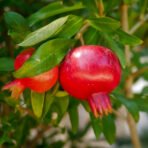

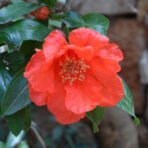
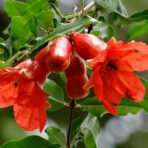
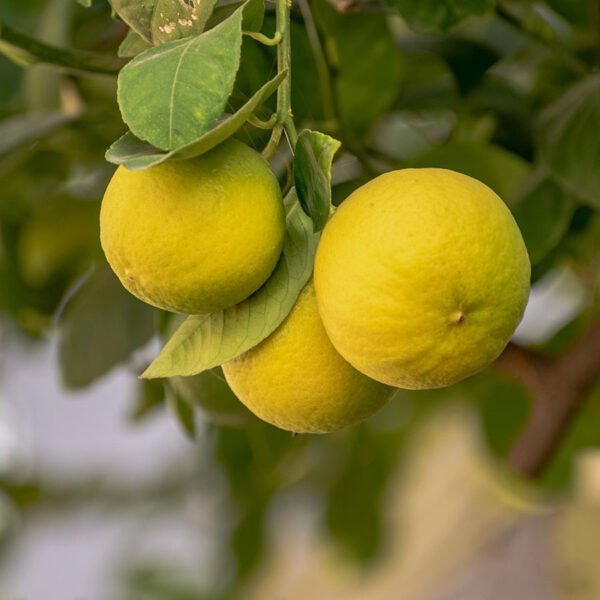
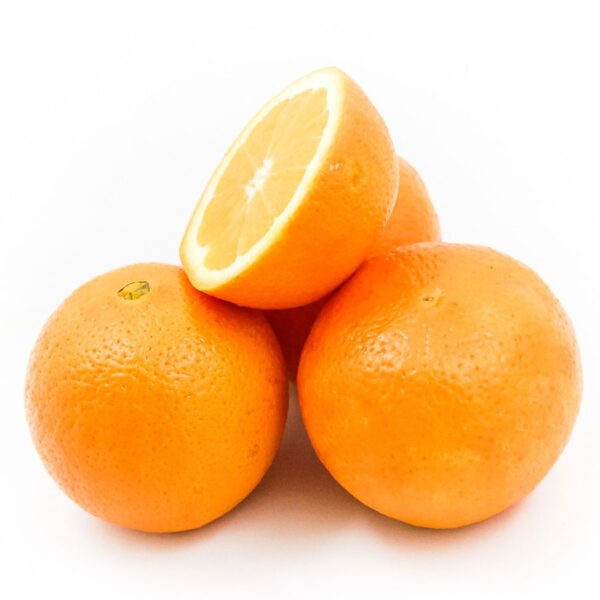




₹299.00 – ₹399.00
Nursery Kart | Images are for reference purposes only. Actual products may vary in shape or appearance based on climate, age, height, etc. The product is replaceable but not returnable.
Dispatch in 7 days.
(MRP Inclusive of all taxes)
Guaranteed Safe Checkout

Table of Contents
The pomegranate plant, scientifically known as Punica granatum, belongs to the family Lythraceae. It is a deciduous shrub that can grow up to 20 feet tall and has a dense, bushy habit. The plant is characterized by its glossy, leathery leaves that are arranged in opposite pairs along the branches. These leaves are typically a deep green color, providing a striking contrast to the vibrant flowers and fruits.
Speaking of flowers, the pomegranate plant produces some of the most visually stunning blooms in the plant kingdom. The flowers are large and showy, with a diameter of about 1 to 2 inches. They have a vibrant red color and are composed of numerous petals that are crinkled at the edges. The flowers are borne singly or in clusters at the tips of the branches, creating a breathtaking display when in full bloom.
But perhaps the most enticing feature of the pomegranate plant is its fruit. The fruit is a round or slightly elongated berry, typically measuring about 2 to 5 inches in diameter. It has a thick, leathery skin that ranges in color from yellowish-green to deep red, depending on the variety. Inside the fruit, there are numerous juicy arils, which are the edible part of the pomegranate. Each aril is filled with a sweet and tangy juice, encapsulating a small seed in its center.
Pomegranates are not only delicious but also highly nutritious. They are packed with antioxidants, vitamins, and minerals, making them a valuable addition to a healthy diet. The fruit is not only consumed fresh but also used in various culinary preparations, such as juices, salads, sauces, and desserts. Additionally, pomegranate juice is a popular ingredient in many health drinks and supplements due to its potential health benefits.
When it comes to cultivation, the pomegranate plant is relatively easy to grow. It thrives in warm climates and prefers full sun exposure. However, it can tolerate a wide range of soil types, including clay, loam, and sandy soils. The plant is also drought-tolerant once established, making it a suitable choice for regions with limited water availability.
Overall, the pomegranate plant is a versatile and attractive addition to any garden or orchard. Whether you are looking to enjoy its stunning flowers, harvest its delicious fruits, or reap its health benefits, this plant is sure to bring beauty and abundance to your outdoor space.
The pomegranate plant, scientifically known as Punica granatum, belongs to the family Lythraceae. It is a deciduous shrub that can reach a height of 15 to 30 feet, depending on the variety and growing conditions. The plant has long, glossy green leaves and produces vibrant orange-red flowers that are followed by the iconic round fruit.
Pomegranate plants are known for their longevity, with some specimens living for more than 200 years. They are also highly adaptable and can thrive in a wide range of climates, from arid regions to subtropical areas. However, they prefer full sun and well-drained soil for optimal growth.
The pomegranate fruit itself is a unique and delicious treat. It is about the size of an apple, with a tough outer skin that ranges in color from yellow to deep red. Inside, the fruit is divided into compartments, each containing a juicy, ruby-red aril. These arils are the edible part of the fruit and are packed with antioxidants, vitamins, and minerals.
In addition to their culinary appeal, pomegranates have been used for centuries in traditional medicine. The fruit and its juice are believed to have numerous health benefits, including boosting the immune system, improving heart health, and reducing inflammation. Pomegranate extract is also a popular ingredient in skincare products, thanks to its antioxidant properties.
When it comes to cultivation, pomegranate plants are relatively low-maintenance. They are drought-tolerant and can survive with minimal watering once established. However, regular watering during the growing season will help promote healthier fruit production. Pruning is also important to maintain the plant’s shape and remove any dead or diseased branches.
Overall, the pomegranate plant is a fascinating and versatile addition to any garden. Whether you’re drawn to its stunning flowers, delicious fruit, or potential health benefits, this plant is sure to be a standout in your landscape.
Proper care and feeding are essential for the healthy growth and fruit production of pomegranate plants. Here are some guidelines to help you take care of your annar plant:
Choose a sunny location with well-drained soil for planting your pomegranate plant. Dig a hole that is twice as wide and deep as the root ball. Place the plant in the hole, making sure that the top of the root ball is level with the soil surface. Fill the hole with soil, gently firming it around the plant. Water thoroughly after planting.
Pomegranate plants have moderate water requirements. Water the plant deeply once a week during the growing season, and reduce the frequency during the dormant period. Avoid overwatering, as it can lead to root rot. Mulching around the base of the plant can help retain moisture and suppress weeds.
Feed your pomegranate plant with a balanced fertilizer in early spring, just before new growth starts. Use a slow-release fertilizer or organic compost to provide the necessary nutrients. Avoid excessive nitrogen fertilizers, as they can promote vegetative growth at the expense of fruit production.
Pruning is important to maintain the shape and size of your pomegranate plant and to promote better air circulation and light penetration. Prune in late winter or early spring before new growth appears. Remove any dead or diseased branches, as well as any suckers that emerge from the base of the plant.
Pomegranate plants are generally resistant to pests and diseases. However, they can be susceptible to fungal infections, such as powdery mildew and root rot, if the growing conditions are unfavorable. Regular inspection and proper cultural practices, such as maintaining good airflow and avoiding overwatering, can help prevent these issues.
In addition to fungal infections, pomegranate plants can also be affected by pests such as aphids, mealybugs, and whiteflies. These pests can be controlled through regular monitoring and the use of organic insecticides or insecticidal soaps. It is important to identify the pests early and take appropriate measures to prevent them from causing significant damage to the plant.
Another common issue that pomegranate plants may face is fruit splitting. This occurs when the fruit expands too quickly, causing the skin to crack. To prevent fruit splitting, ensure that the plant receives consistent and adequate watering throughout the growing season. Mulching around the base of the plant can also help regulate soil moisture and prevent rapid fluctuations that can lead to fruit splitting.
Lastly, it is important to monitor the overall health of your pomegranate plant. Look out for any signs of yellowing leaves, stunted growth, or wilting, as these can indicate nutrient deficiencies or other underlying issues. Adjusting the fertilization and watering practices accordingly can help address these problems and promote the overall health and vitality of your pomegranate plant.
During the growing season, which typically starts in late spring and extends through summer, the pomegranate plant experiences rapid growth. It begins with the emergence of new shoots and leaves, followed by the development of vibrant, trumpet-shaped flowers. These flowers, which can range in color from bright orange to deep red, are not only visually stunning but also attract pollinators such as bees and butterflies. After successful pollination, the flowers give way to the formation of fruit. Pomegranate fruits start off as small green orbs and gradually enlarge as they mature. The time it takes for the fruit to ripen can vary, but it typically occurs in the late summer or early fall. As the fruit matures, its skin transitions from green to a rich, vibrant hue, with some varieties boasting shades of red, purple, or even yellow. Once the fruit is fully ripe, it can be harvested and enjoyed. Pomegranate seeds, or arils, are the edible part of the fruit and are packed with antioxidants and nutrients. They have a unique combination of sweet and tart flavors, making them a popular addition to salads, desserts, and even savory dishes. In addition to its delicious fruit, the pomegranate plant also has ornamental value. Its glossy, dark green leaves provide an attractive backdrop to the vibrant flowers and fruit. As the plant ages, its bark develops a distinctive, gnarled texture, adding to its visual appeal. To ensure the continued growth and health of a pomegranate plant, proper care is essential. It thrives in full sun and well-draining soil, although it can tolerate a wide range of soil types. Regular watering is important, especially during the hot summer months, but the plant should not be overwatered as it is susceptible to root rot. Pruning is another crucial aspect of pomegranate plant care. It is recommended to prune the plant in late winter or early spring to remove any dead or diseased branches and promote new growth. This also helps maintain the plant’s desired shape and size. In conclusion, the growth, height, and life of a pomegranate plant can be a rewarding experience for gardeners. From its initial growth spurt to the development of beautiful flowers and delicious fruit, this plant offers both aesthetic and culinary pleasures. With proper care and attention, a pomegranate plant can thrive for many years, providing a bountiful harvest and adding beauty to any garden or landscape.
The pomegranate plant is known by various common names, including annar plant, anar plant, and Punica granatum. These names are used interchangeably to refer to the same plant. The plant is also associated with tags such as fruit-bearing shrub, pomegranate tree, and ornamental plant.
Whether you are a gardening enthusiast or a commercial grower, the pomegranate plant is a rewarding addition to any landscape. Its vibrant flowers, delicious fruit, and relatively low maintenance requirements make it a popular choice for both aesthetic and culinary purposes. With proper care and attention, your pomegranate plant will thrive and provide you with years of beauty and bounty.
One of the reasons why the pomegranate plant is so highly regarded is its versatility. Not only does it produce beautiful flowers that add a pop of color to any garden, but it also yields a bountiful harvest of delicious fruit. The pomegranate fruit is not only visually appealing with its ruby-red arils, but it is also packed with antioxidants and nutrients that offer numerous health benefits.
Aside from its aesthetic and culinary value, the pomegranate plant is also valued for its hardiness and adaptability. It can thrive in various climates, from hot and dry regions to more temperate areas. This makes it an excellent choice for gardeners and growers in a wide range of locations.
When it comes to caring for a pomegranate plant, there are a few key considerations to keep in mind. First and foremost, it requires well-draining soil and ample sunlight. The plant prefers full sun exposure, so it’s important to choose a location in your garden where it will receive at least six to eight hours of direct sunlight each day.
In terms of soil, the pomegranate plant thrives in loamy soil that is rich in organic matter. It’s important to ensure that the soil is well-draining to prevent waterlogged conditions, which can lead to root rot. If your soil is heavy or clay-like, you can amend it with compost or other organic matter to improve its drainage.
Watering is another important aspect of pomegranate plant care. While the plant is relatively drought-tolerant once established, it’s important to provide it with regular water during the growing season. This is especially crucial during hot and dry periods when the plant may require additional irrigation.
Pruning is also an essential part of pomegranate plant maintenance. Regular pruning helps to promote airflow and sunlight penetration, which can prevent disease and improve fruit production. It’s best to prune the plant in late winter or early spring before new growth begins. Remove any dead, damaged, or crossing branches, and shape the plant to maintain a desirable form.
With proper care and attention, your pomegranate plant will reward you with a stunning display of flowers and a plentiful harvest of delicious fruit. Whether you choose to enjoy the fruit fresh, make juice or smoothies, or incorporate it into your favorite recipes, the pomegranate is sure to add a burst of flavor and nutrition to your meals.
| Dimensions | 4 × 4 × 2 in |
|---|---|
| SELECT PLANT SIZE |
SMALL, MEDIUM |
| SELECT PLANTER |
Grower Pot |
| SELECT COLOR |
Black, Off White |
| Brand |
Nursery Kart |
Only logged in customers who have purchased this product may leave a review.
No account yet?
Create an Account
Subscribe to our newlletter and we will ship 20% discount code today
Will be used in accordance with our Privacy Policy
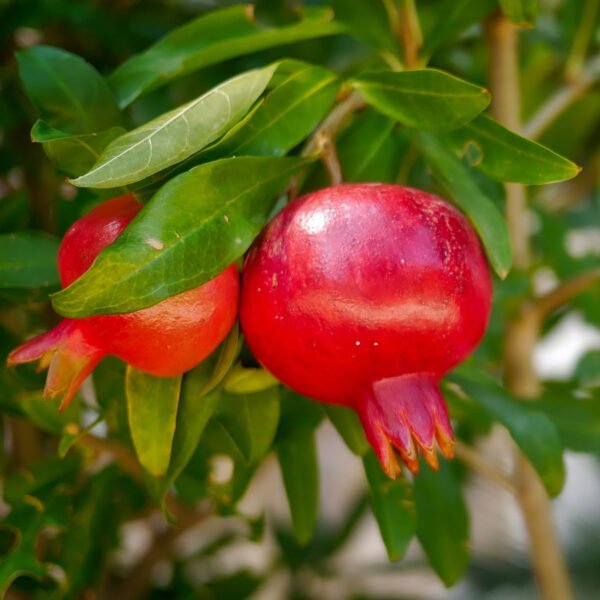
Reviews
Clear filtersThere are no reviews yet.